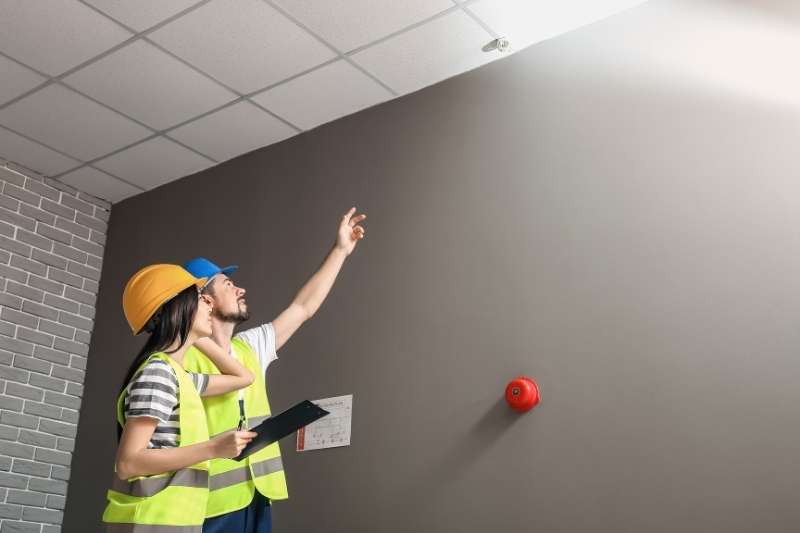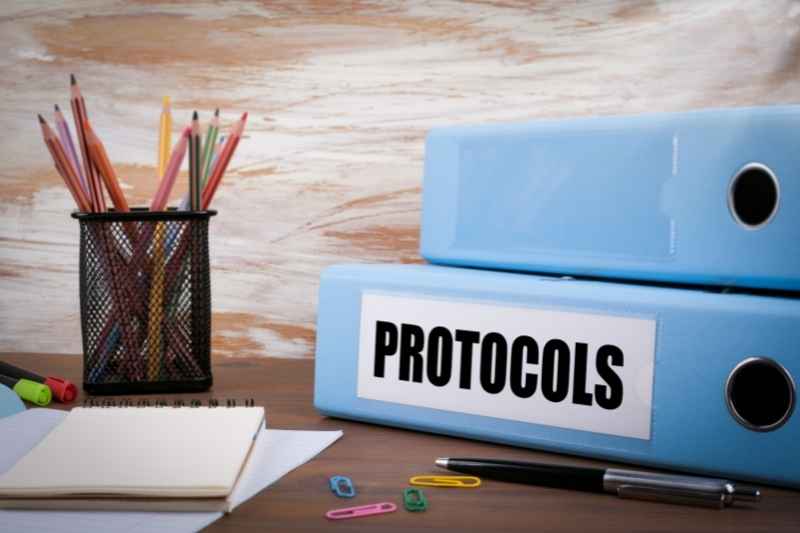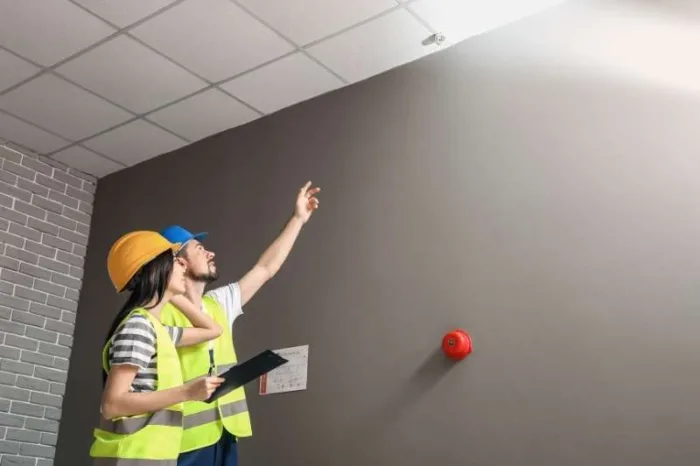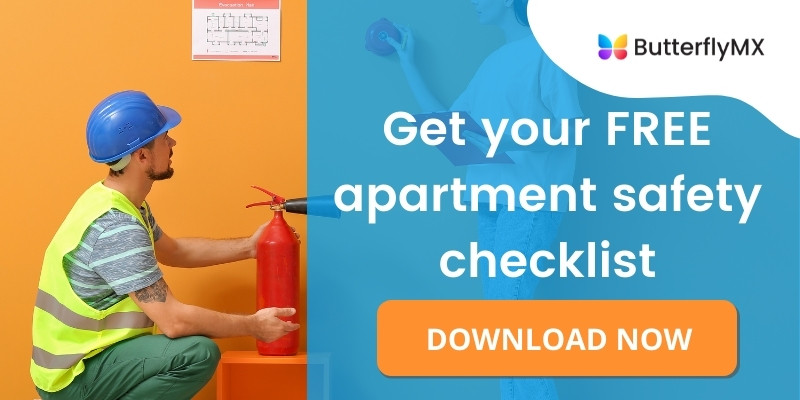Key takeaways
- You can keep your building’s safety measures up to date by following an apartment safety checklist and creating a schedule for safety checks.
- There are five main things to include in your checklist: fire safety systems, access control & security, outdoor lighting, parking security, and backup generators.
- Your property manager safety manual should include your checklist as well as contact information for regulatory help should you need it.

When it comes to multifamily building safety, there are many things at stake. From tenant safety to building preservation, the responsibility of delegating items on the apartment safety checklist for the property rests on your shoulders.
Depending on your state regulations, you likely have formal building safety inspections every one to three years. In theory, this is a sufficient amount of time. However, as a property manager, it’s best to do less formal inspections more frequently to ensure the safety of your residents and staff.
It may feel like a heavy burden, but there are ways to simplify and organize safety checks instead of waiting until inspection days. By creating an apartment safety checklist for staff to follow, you make building safety easy and less stressful.
In this post we cover:
- How can I make sure my apartment is safe?
- What should be on an apartment safety checklist?
- What should a safety manual include?
How can I make sure my apartment is safe?
You can make sure your apartment building is safe by creating a safety inspection schedule. While legally you are only responsible for annual state inspections, you’ll have better success by taking it upon yourself to inspect every few months.
For instance, doing safety inspections virtually or in person in the middle of the year can ensure that your building doesn’t go more than six months without a safety inspection.
Safety systems (an umbrella term for fire, entry, and other security tech in your building) are made to withstand wear and tear, so they work when an emergency occurs. However, not all tech is unbreakable — meaning some systems are lemons, and you’d hate to see something fail when you need it most.
Printing a safety protocol schedule will help you and the staff know when it’s time to inspect specific systems and building infrastructure.
What should be on an apartment safety checklist?
It can be easy to confuse what should and shouldn’t be on your apartment tenant safety checklist. In general, this checklist centers more on physical safety features instead of general safety measures.
Your apartment safety checklist should include these five tasks:
1. Fire safety systems
The perception of fire safety in an apartment building is that alarms will go off on time and sprinklers will follow right after. But that isn’t always the case, and it’s important to know the common instances that cause failures.
Reasons fire systems fail:
- System malfunction: Sometimes, a system just stops working. Unless you’re checking your fire alarm system frequently, you’ll never know until it’s too late.
- Human error: Whether it’s accidentally shutting the system off or not putting a component back in the right place, human error accounts for many system failures.
- Lack of maintenance: In one study, it was found that 10% of sprinkler failures are the result of poor maintenance.
When putting together an apartment fire safety checklist, it’s critical to keep the above examples in mind.
2. Access control & security
Most safety measures in apartments will include an access control system or some kind of security tech. Most of these systems will require power to allow entry without hassle. However, for some systems, losing power can also mean losing the use of the access control system.
What can happen to access control systems if the power goes out in the building:
- With a fail-safe lock: Fail-safe locks are designed to unlock in the case of power outages. This makes them perfect for emergency exits, and they aren’t likely to cause an evacuation crisis should the power cut out.
- With a fail-secure lock: An access system with a fail-secure lock needs more monitoring. This type of lock will fail to open if the system loses power.
Pro tip: Consider access control systems with backup batteries that will keep your system working even if the power goes out. And don’t forget to perform regular property maintenance on these backup power units often to ensure they’re in working order so that the flow of traffic isn’t disrupted.
Discover more lock examples:
3. Outdoor lighting
Outdoor lights may not seem like a critical piece of safety around an apartment building. However, lights placed at strategic points around the property can discourage burglary as well as scare off unwanted animals.
Checking outdoor lights not only maintains a safe perimeter but can also help reduce liability. For example, if someone gets hurt on your property because the area wasn’t well-lit, they may have grounds for a lawsuit.
4. Parking security
Whether your apartment grounds have a parking garage or parking lot, it’s critical to make sure all security measures are up-to-date and working.
Parking lot safety includes:
- Making sure security cameras are working.
- Ensuring that the access control system is working.
- Checking that lights illuminate the entire parking area.
Parking safety may not be as time-sensitive as fire safety, but it’s still a crucial element to include in your apartment safety checklist.
5. Backup generators
While a backup generator isn’t technically a “safety system,” it’s still a critical part of the building’s infrastructure. Without power, many of your apartment safety systems will fail to work.
That’s why it’s critical to maintain your backup generator and check that it’s working properly.
Things to check during your safety inspection:
- Battery and cables: With time, batteries and cables can erode. This will not only cause the generator to stop working properly, but it could also pose a fire hazard.
- Fluids and oils: It’s important to change out fluids, such as coolants and oils, often. This will help maintain the health of your backup generator.
- Pipes and filters: Cleaning out pipes and filters for debris, dust, and leaves will help keep your generator working properly. Additionally, this will also ensure nothing will burn or clog during use.
- Fuel levels: You never know when you’re going to need a backup generator. Perhaps a storm knocks out power, or there’s a city-wide outage. Whatever the cause, you’ll need to maintain adequate fuel levels for spontaneous use.

What should a safety manual include?
If you want to instill an organized and streamlined apartment safety check protocol, then you’ll need a safety manual. Within this property manager safety manual, you should include everything staff needs to know about apartment safety.
Things to include in a safety manual:
- Apartment safety checklist
- Codes and regulations of your state/district
- Phone numbers for service providers
- Contact information for building code administrators
These are only a few of the things that should be in your manual. The final product should have all the details necessary for a safe, functioning environment.

Get your free quote!
Fill in the form below, and we'll email you right back.
Want a free quote?
Fill in the form below, and we'll email you right back.
You’ll be redirected shortly...






